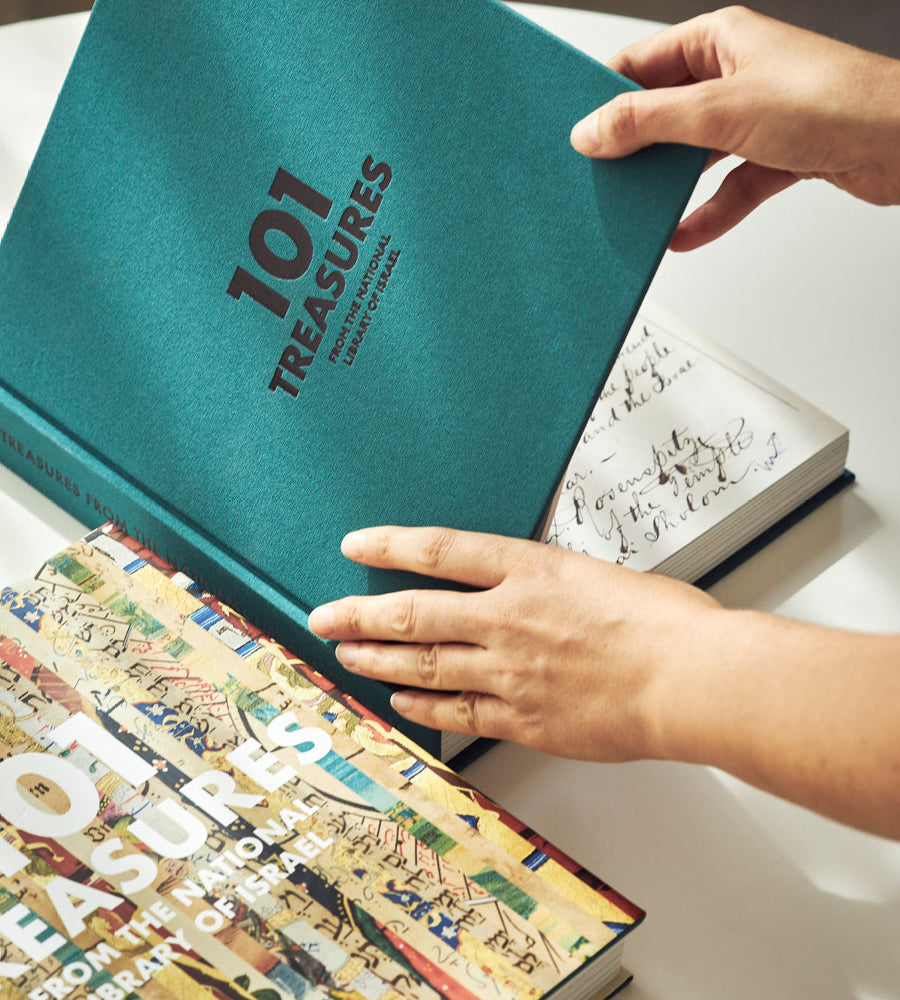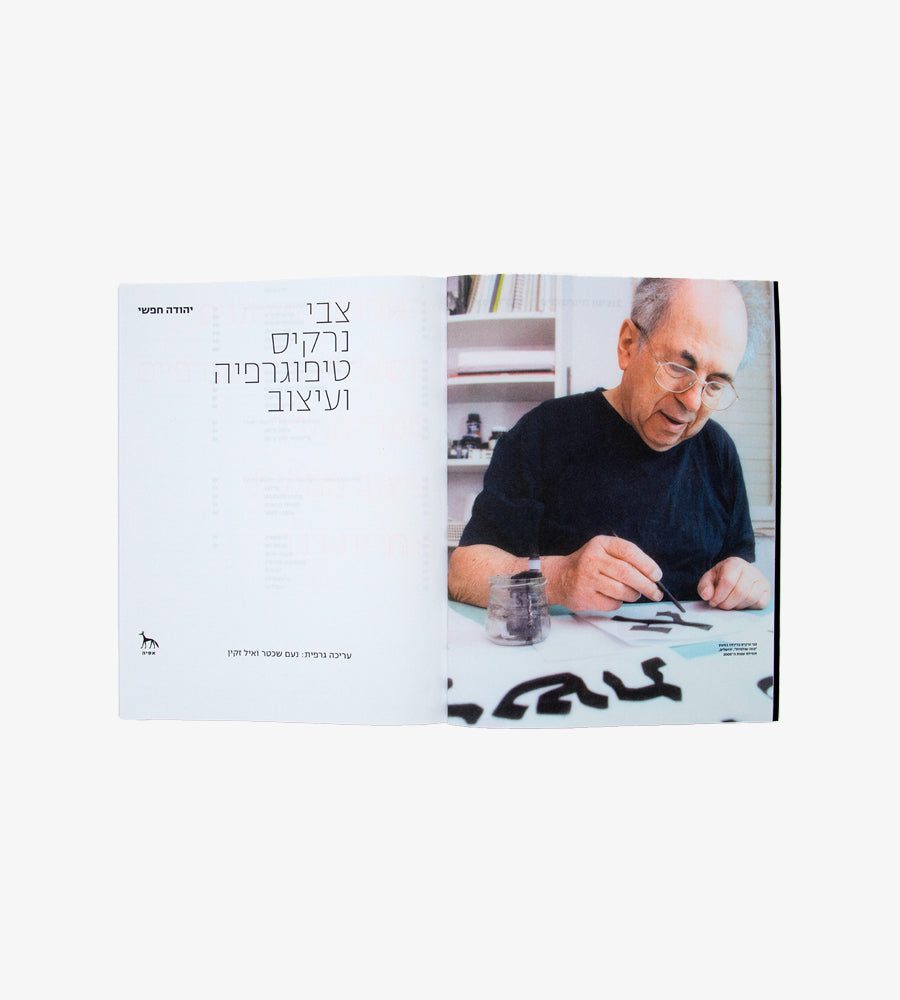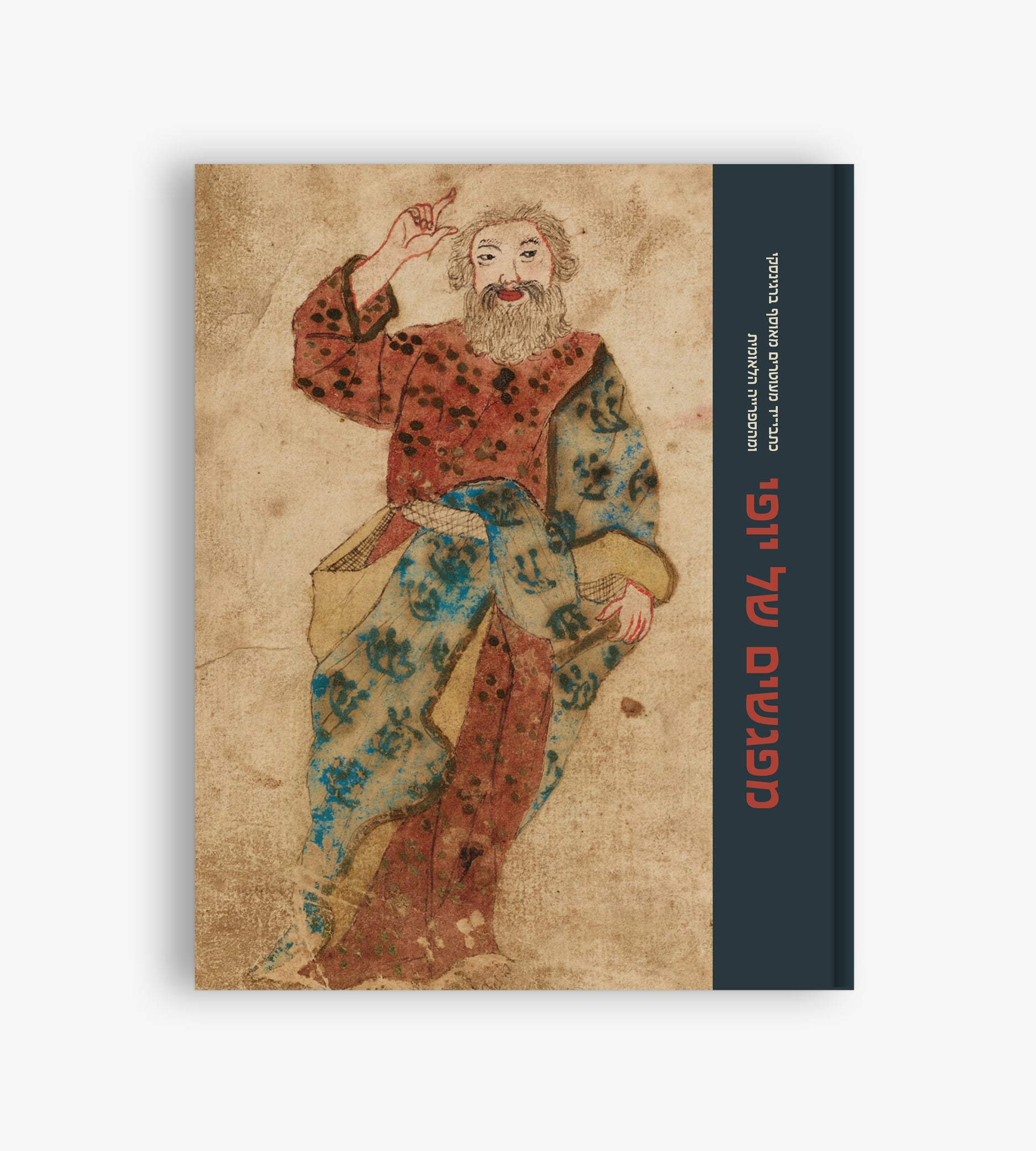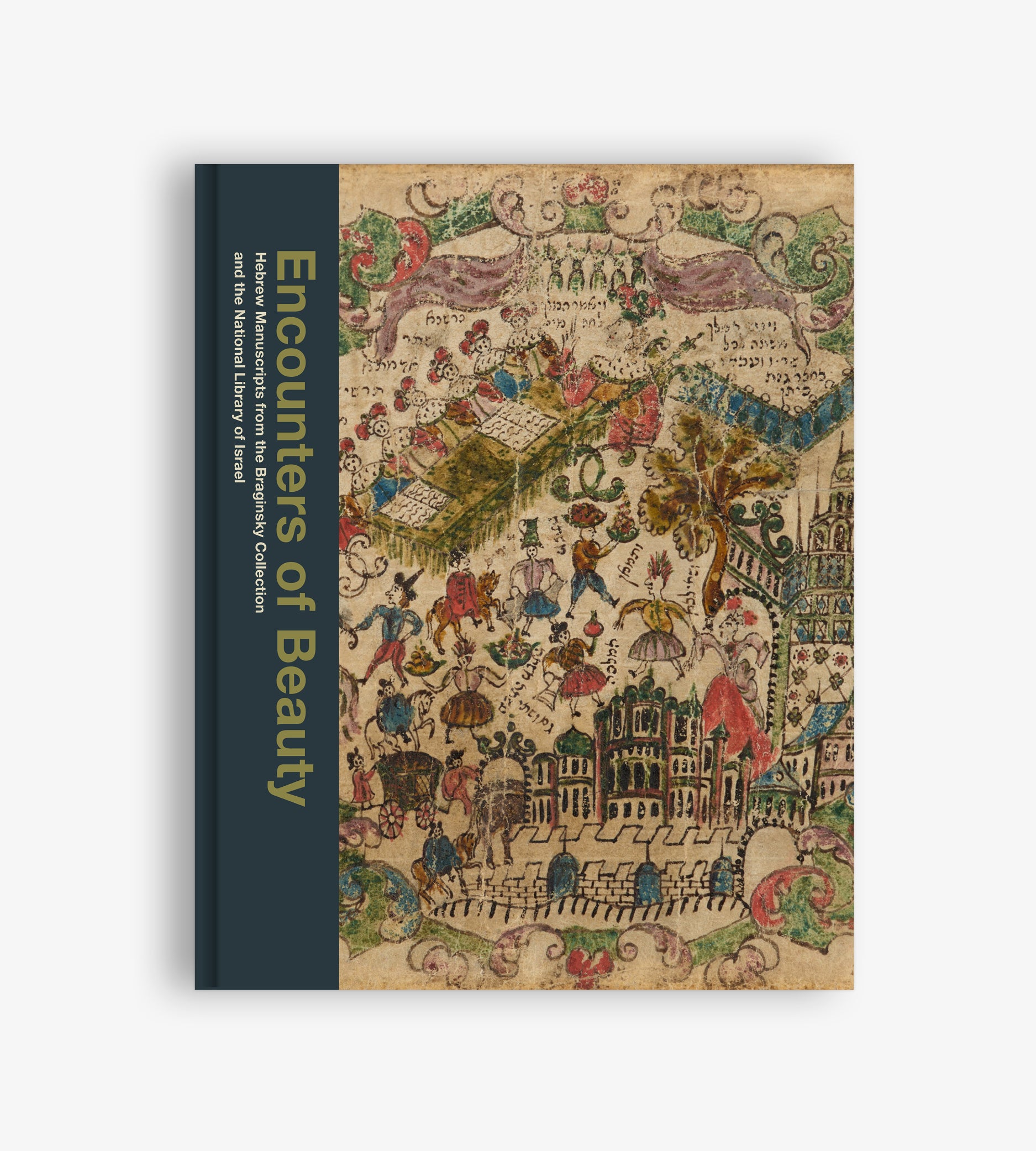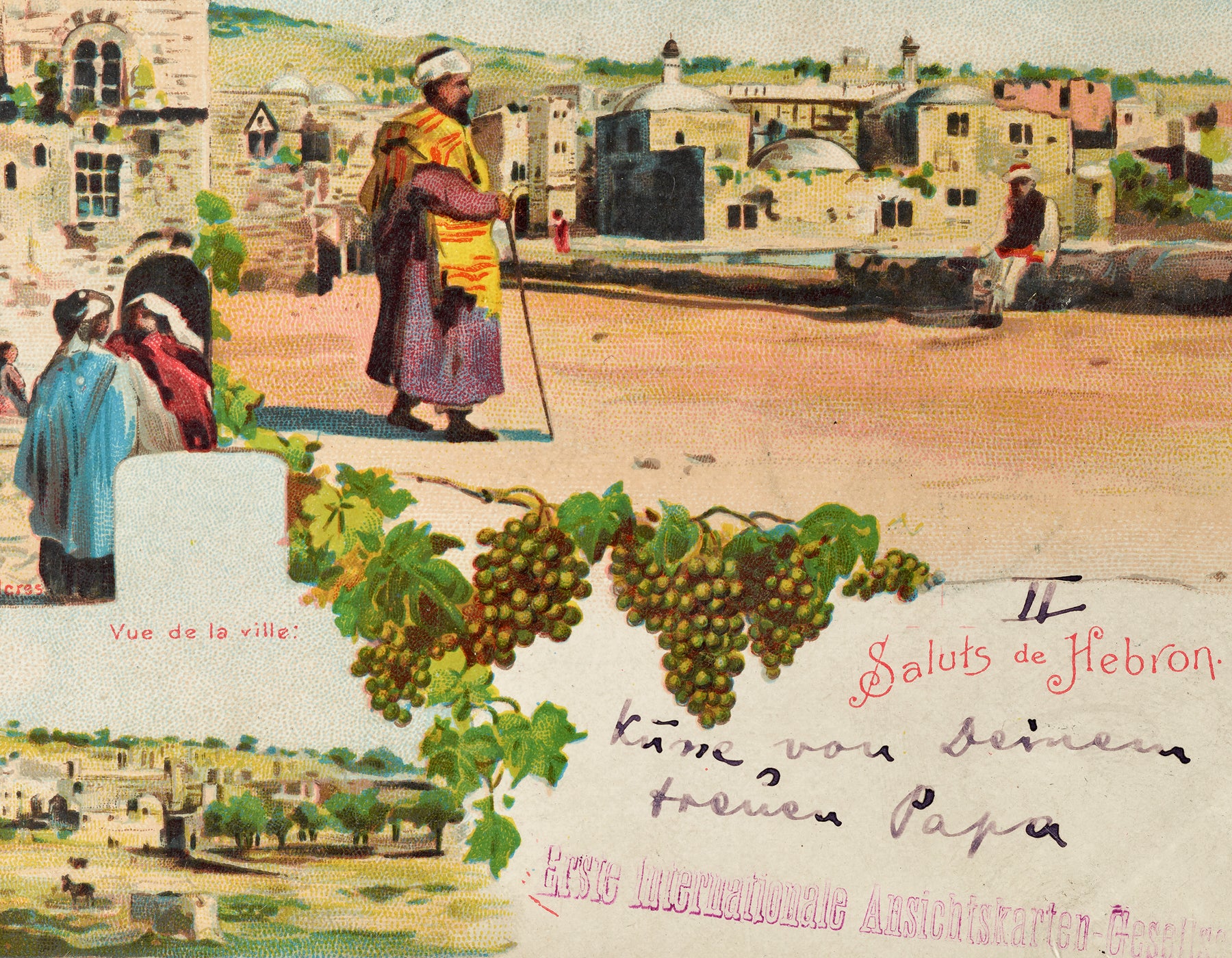
The Visionary as Pilgrim
GALIA RICHLER GREBLER

Theodor Herzl (1860–1904), the father of modern Zionism, visited the Land of Israel only once in his life. Herzl’s journey, accompanied by a Zionist delegation, was organized hastily for the purpose of meeting Emperor Wilhelm II and persuading him to sponsor the Zionist enterprise. For three years, Herzl had been trying in vain to meet with the emperor and then received an invitation to greet him in Jerusalem — a central stop on the emperor’s journey to the Holy Land.
Two days after he arrived in Jerusalem, Herzl sent two postcards to his eldest daughter, eight-year-old Paulina. He sent her a “souvenir from Jerusalem” postcard that had been issued in honor of the emperor’s visit. It features the Temple Mount in the center and a portrait of Wilhelm II on the left above the eagle symbolizing the German royal family. On the back of the postcard, Herzl wrote (in German): “To my good Paulina, gentle kisses from your devoted father in Jerusalem.” The second postcard depicts the Tomb of the Patriarchs and the ancient holy city of Hebron.
Herzl’s impressions of Jerusalem and the rest of the country and his meetings with members of the old and new Jewish communities living in the Land of Israel appear in his novel Altneuland, which he wrote four years later. He described his optimistic vision for creating a new society in the ancient land. The Old City of Jerusalem depicted in his novel is home not just to the Dome of the Rock but also to another imagined structure called “The Sanctuary of Peace,” a replacement for the Temple. However, as the two postcards he chose to send to his daughter attest, Herzl paid attention not only to the utopian future but also to the two ancient holy cities.



